Abstract
The interaction between smooth and rough Listeria monocytogenes and mouse peritoneal macrophages in culture was investigated. Initially, antibiotics were deleted from the culture medium, and no attempt other than the removal of unphagocytized bacteria by extensive washings was made to control extracellular growth. Under these conditions the monolayers were rapidly destroyed within an 8-h period, and this was associated with increases in the intracellular population of both strains. Extracellular viability counts revealed that washings failed to reduce the bacteria in the medium to less than 10% of the original inoculum. Continuous phagocytosis of Listeria which grew logarithmically in the maintenance media appears to account for the observed changes in the number of intracellular bacteria. The data also indicate that it is primarily the free bacteria in the culture medium which are responsible for the cytotoxic effects. In other experiments streptomycin-penicillin solutions were added to the maintenance media after an initial period of phagocytosis. In the presence of antibiotics, the total number of macrophages per field remained relatively constant, and no morphological alterations in the leukocyte cultures were observable. Extensive intracellular multiplication of either strain was not evident in fixed and stained cover slips. Viable intracellular counts reveal that after 24 h there is almost total killing of the rough variant, whereas the smooth strain tended towards complete survival.
Full text
PDF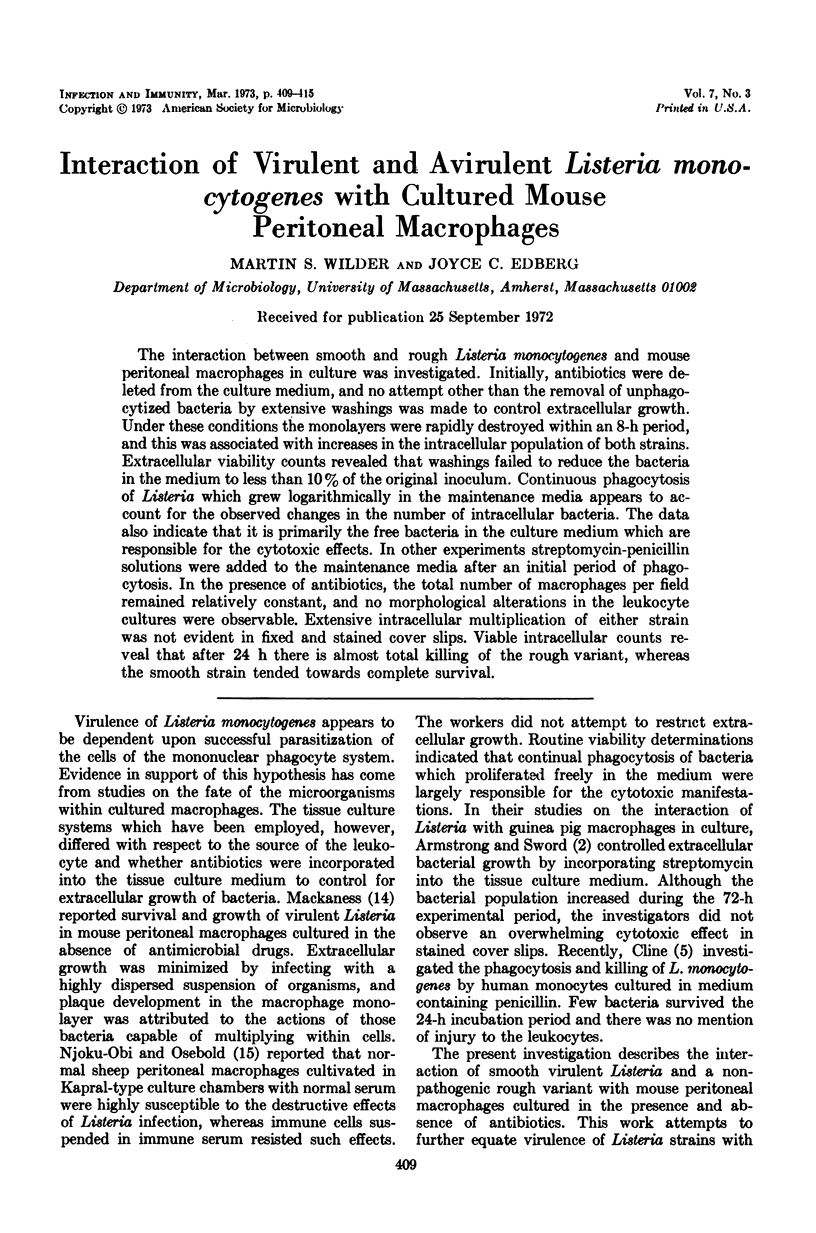
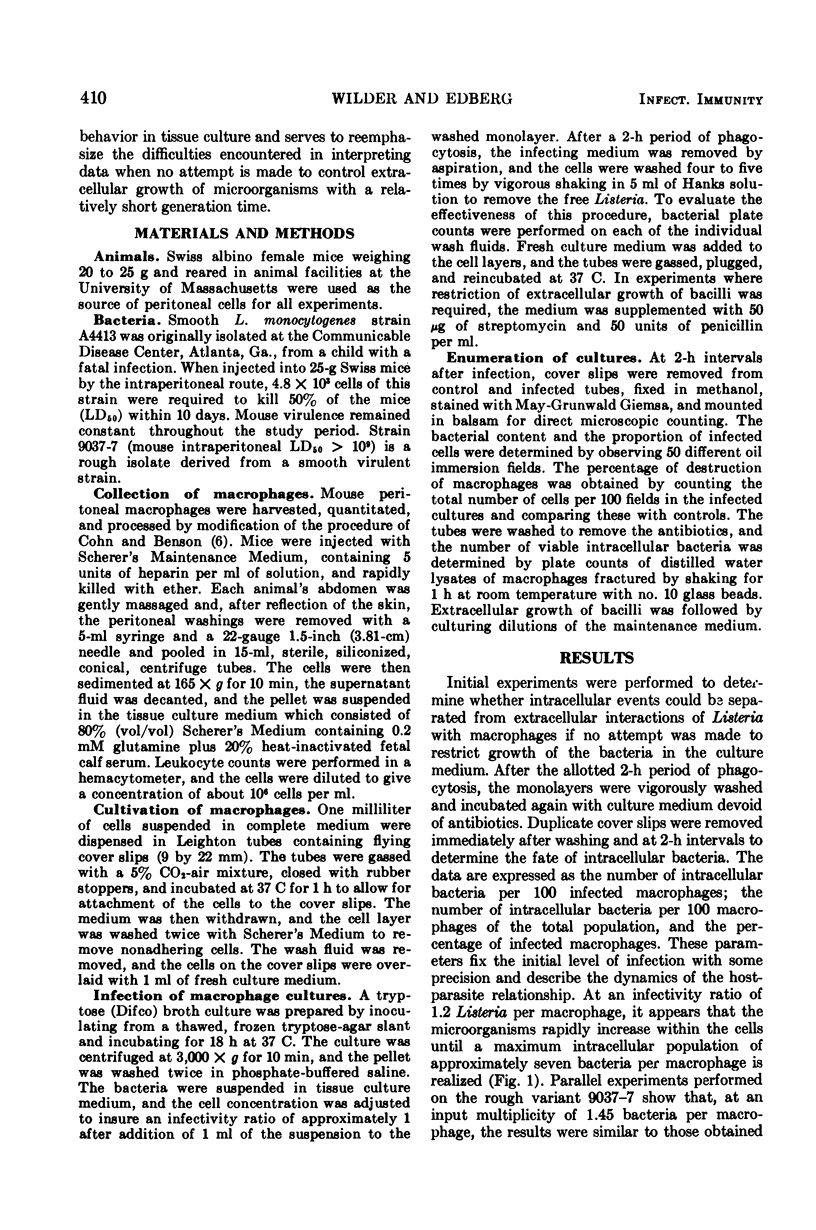
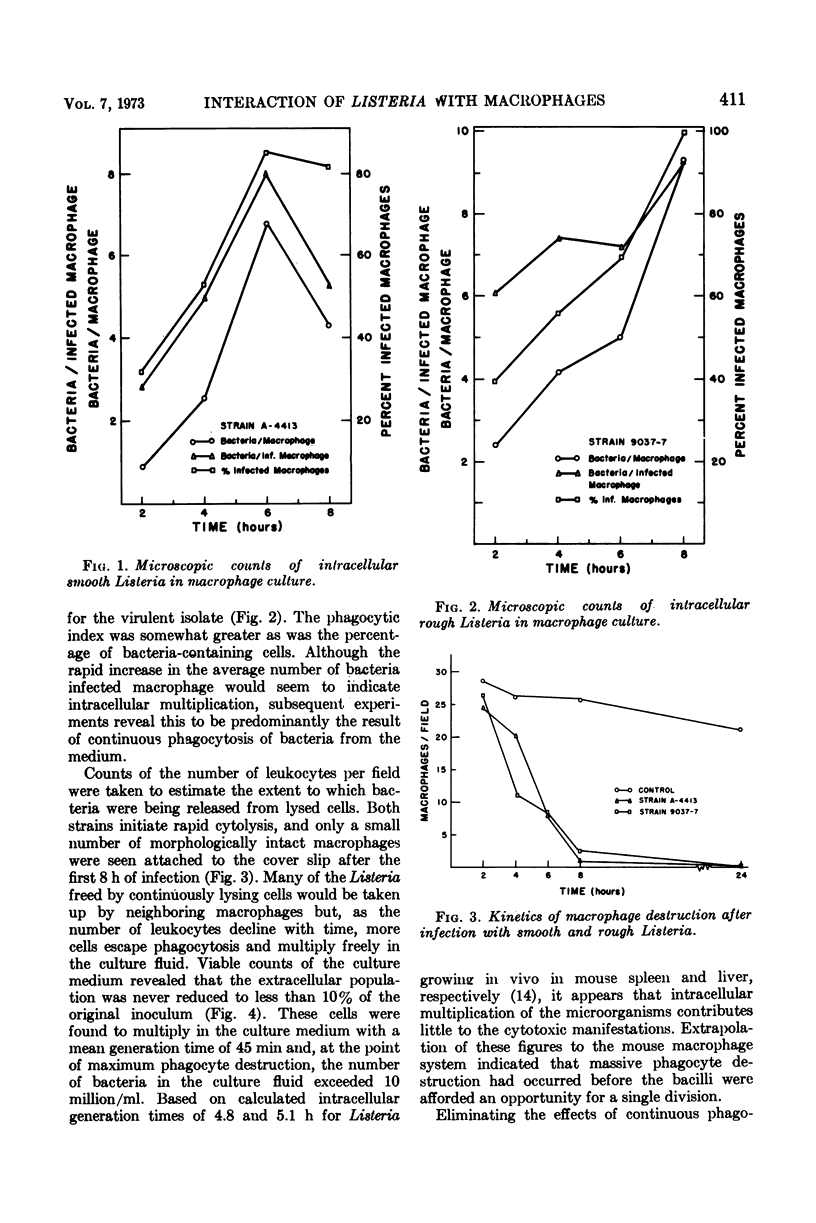
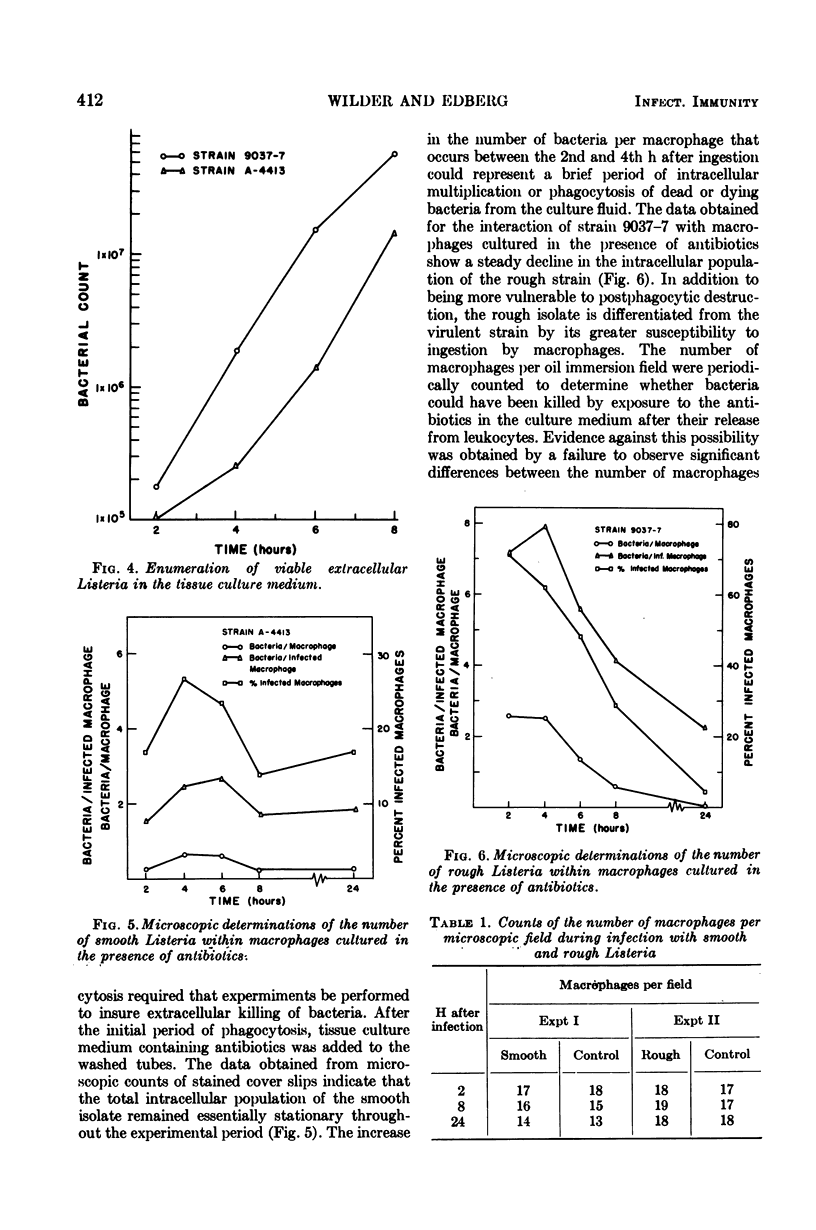
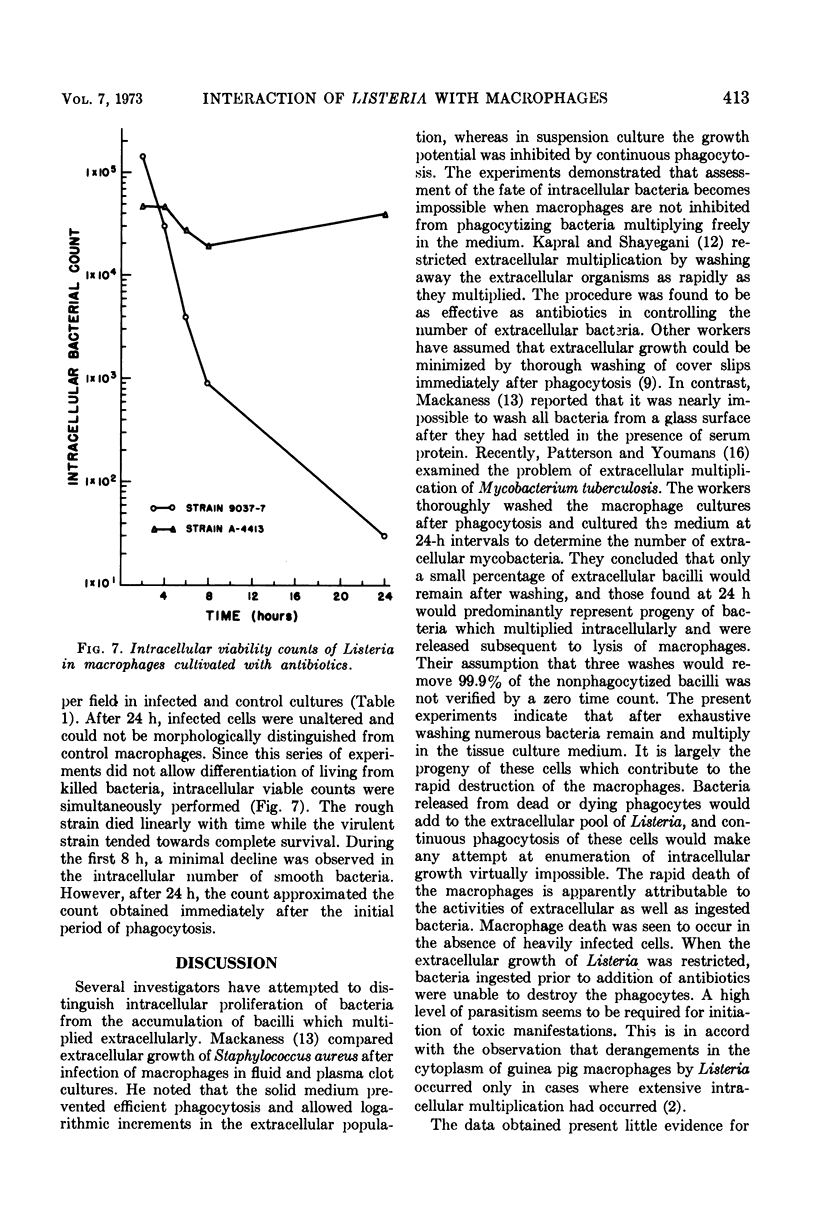
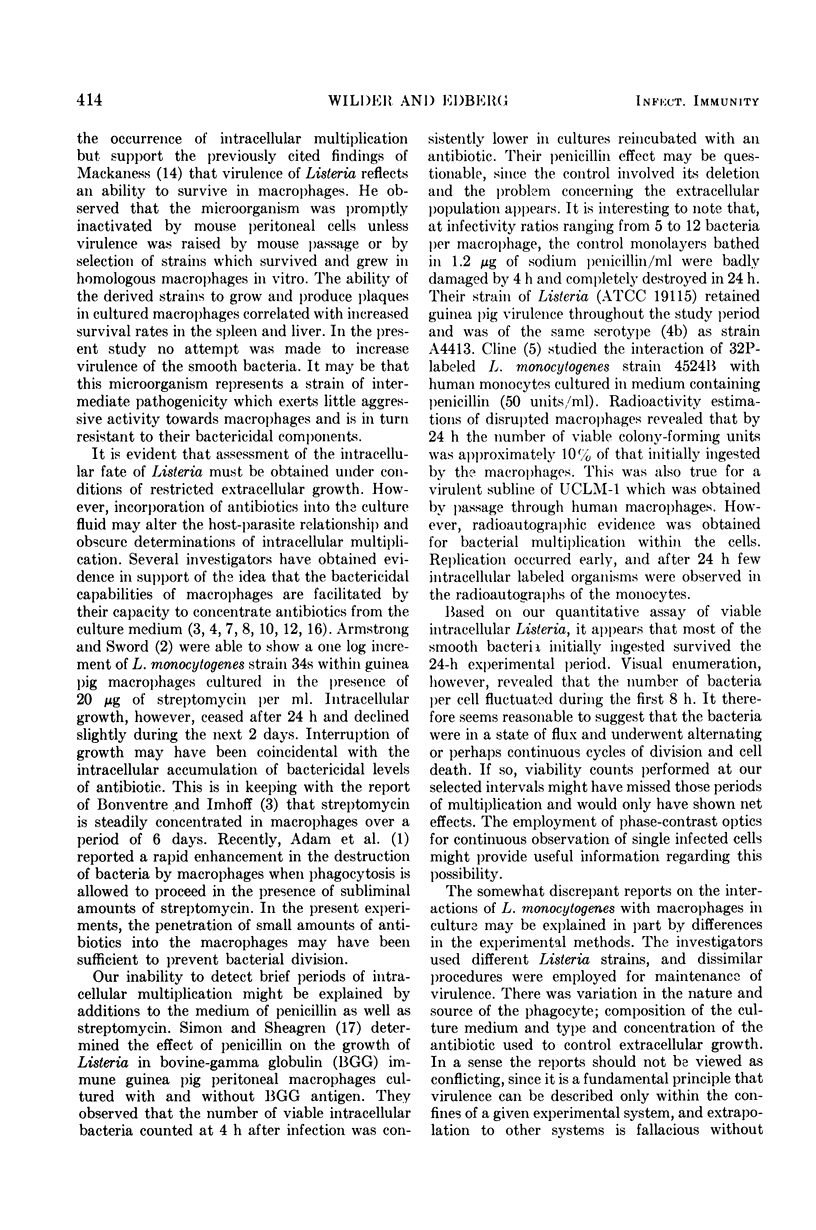
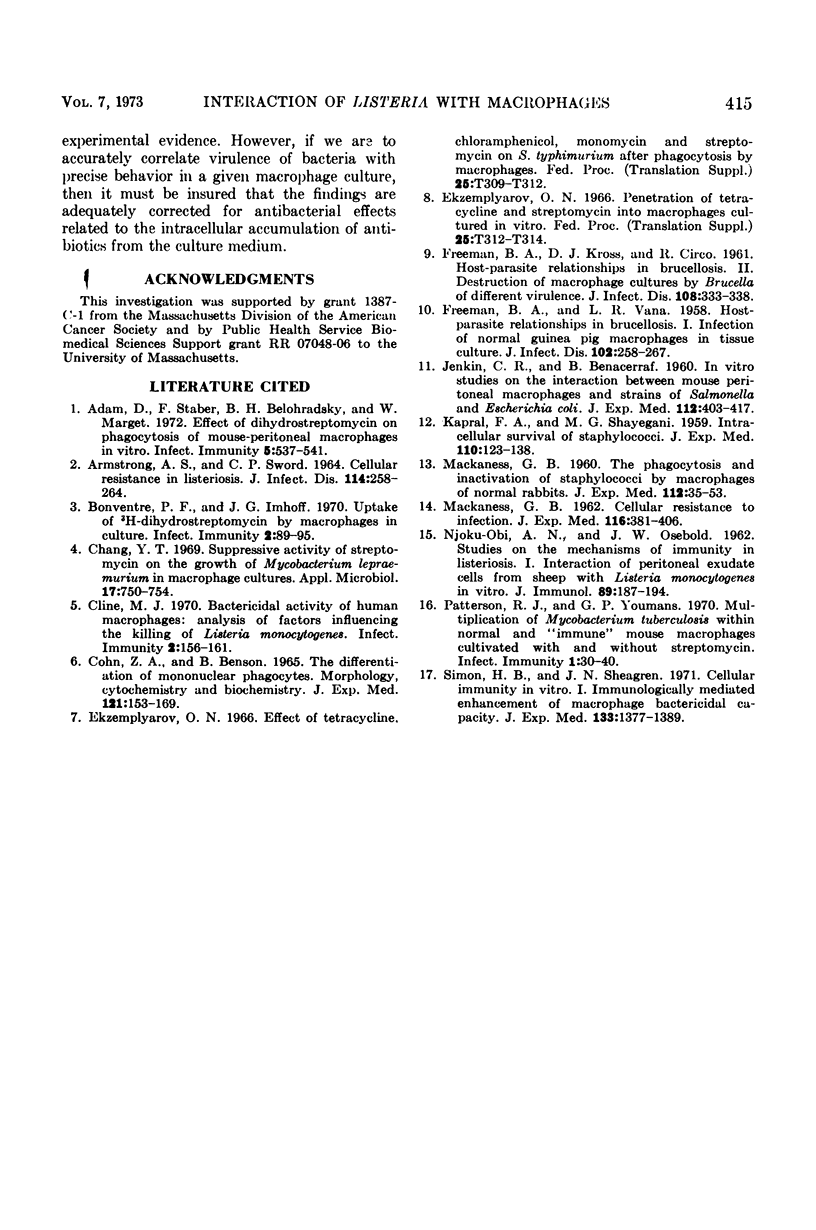
Selected References
These references are in PubMed. This may not be the complete list of references from this article.
- ARMSTRONG A. S., SWORD C. P. CELLULAR RESISTANCE IN LISTERIOSIS. J Infect Dis. 1964 Jun;114:258–264. doi: 10.1093/infdis/114.3.258. [DOI] [PubMed] [Google Scholar]
- Adam D., Staber F., Belohradsky B. H., Marget W. Effect of dihydrostreptomycin on phagocytosis of mouse-peritoneal macrophages in vitro. Infect Immun. 1972 Apr;5(4):537–541. doi: 10.1128/iai.5.4.537-541.1972. [DOI] [PMC free article] [PubMed] [Google Scholar]
- Bonventre P. F., Imhoff J. G. Uptake of h-dihydrostreptomycin by macrophages in culture. Infect Immun. 1970 Jul;2(1):89–95. doi: 10.1128/iai.2.1.89-95.1970. [DOI] [PMC free article] [PubMed] [Google Scholar]
- COHN Z. A., BENSON B. THE DIFFERENTIATION OF MONONUCLEAR PHAGOCYTES. MORPHOLOGY, CYTOCHEMISTRY, AND BIOCHEMISTRY. J Exp Med. 1965 Jan 1;121:153–170. doi: 10.1084/jem.121.1.153. [DOI] [PMC free article] [PubMed] [Google Scholar]
- Chang Y. T. Suppressive activity of streptomycin on the growth of Mycobacterium lepraemurium in macrophage cultures. Appl Microbiol. 1969 May;17(5):750–754. doi: 10.1128/am.17.5.750-754.1969. [DOI] [PMC free article] [PubMed] [Google Scholar]
- Cline M. J. Bactericidal Activity of Human Macrophages: Analysis of Factors Influencing the Killing of Listeria monocytogenes. Infect Immun. 1970 Aug;2(2):156–161. doi: 10.1128/iai.2.2.156-161.1970. [DOI] [PMC free article] [PubMed] [Google Scholar]
- FREEMAN B. A., KROSS D. J., CIRCO R. Host-parasite relationships in brucellosis. II. Destruction of macrophage cultures by Brucella of different virulence. J. J Infect Dis. 1961 May-Jun;108:333–338. doi: 10.1093/infdis/108.3.333. [DOI] [PubMed] [Google Scholar]
- FREEMAN B. A., VANA L. R. Host-parasite relationships in brucellosis. I. Infection of normal guinea pig macrophages in tissue culture. J Infect Dis. 1958 May-Jun;102(3):258–267. doi: 10.1093/infdis/102.3.258. [DOI] [PubMed] [Google Scholar]
- JENKIN C., BENACERRAF B. In vitro studies on the interaction between mouse peritoneal macrophages and strains of Salmonella and Escherichia coli. J Exp Med. 1960 Aug 1;112:403–417. doi: 10.1084/jem.112.2.403. [DOI] [PMC free article] [PubMed] [Google Scholar]
- KAPRAL F. A., SHAYEGANI M. G. Intracellular survival of staphylococci. J Exp Med. 1959 Jul 1;110(1):123–138. doi: 10.1084/jem.110.1.123. [DOI] [PMC free article] [PubMed] [Google Scholar]
- MACKANESS G. B. Cellular resistance to infection. J Exp Med. 1962 Sep 1;116:381–406. doi: 10.1084/jem.116.3.381. [DOI] [PMC free article] [PubMed] [Google Scholar]
- MACKANESS G. B. The phagocytosis and inactivation of staphylococci by macrophages of normal rabbits. J Exp Med. 1960 Jul 1;112:35–53. doi: 10.1084/jem.112.1.35. [DOI] [PMC free article] [PubMed] [Google Scholar]
- NJOKU-OBI A. N., OSEBOLD J. W. Studies on mechanisms of immunity in listeriosis. I. Interaction of peritoneal exudate cells from sheep with Listeria monocytogenes in vitro. J Immunol. 1962 Aug;89:187–194. [PubMed] [Google Scholar]
- Patterson R. J., Youmans G. P. Multiplication of Mycobacterium tuberculosis Within Normal and "Immune" Mouse Macrophages Cultivated With and Without Streptomycin. Infect Immun. 1970 Jan;1(1):30–40. doi: 10.1128/iai.1.1.30-40.1970. [DOI] [PMC free article] [PubMed] [Google Scholar]
- Simon H. B., Sheagren J. N. Cellular immunity in vitro. I. Immunologically mediated enhancement of macrophage bactericidal capacity. J Exp Med. 1971 Jun 1;133(6):1377–1389. doi: 10.1084/jem.133.6.1377. [DOI] [PMC free article] [PubMed] [Google Scholar]


